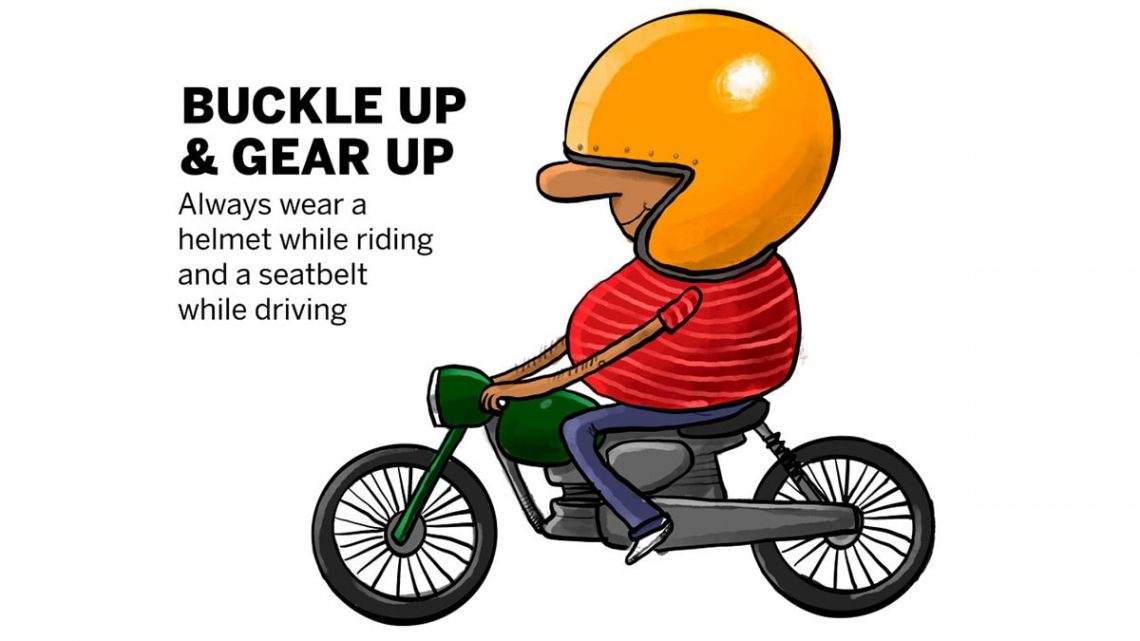Every time we step out onto the road—whether as a driver, passenger, cyclist, or pedestrian—we face an inherent risk of road crashes. In 2023, India witnessed a staggering 4,80,583 road crashes, resulting in 1,72,890 fatalities and leaving 4,62,425 people injured. These numbers highlight a harsh reality: road crashes remain one of theleading causes of death and injury in the country. Pedestrians and two-wheeler riders, who make up two-thirds of all fatalities, are the most vulnerable.
Yet, many of these lives could have been saved with something as simple as the correct use of safety gear. Helmets, seat belts, reflective clothing, and child restraint systems are more than just accessories—they are life saving tools.
“What we need is an extensive awareness campaign at the level of the Swachh Bharat Mission to address the issue of road crashes. Many road crash events and their resulting injuries/deaths are to a large extent avoidable. For example, the mandatory use of seat belts, not just front but also rear, is the simplest behavioural change that each one of us can practise every time we step into a four-wheeler. With a simple click of the seat belt, each of us works towards ensuring our own safety as well as that of fellow passengers,” said Piyush Tewari, founder and CEO, SaveLIFE Foundation.
Here’s why safety gear is crucial and what we can do to ensure everyone takes road safety seriously.
Why Safety Gear is Critical for Road Safety?
The primary goal of safety gear is not just injury prevention but survival. Here’s a closer look at some essential safety equipment that can save lives in road crashes:
1. Helmets: Your First Line of Defence
A helmet is more than a legal requirement—it’s a lifesaver. Wearing a helmet reduces the risk of death by 42% and brain injury by 70% for two-wheeler riders. However, not all helmets offer the same level of protection. Only ISI-certified helmets provide reliable safety, unlike trendy, low-cost alternatives that may look appealing but fail to protect in serious crashes.
2. Seat Belts: Simple Yet Effective
Seat belts are one of the simplest and most effective safety devices. They reduce the risk of fatalities by half during a collision. Importantly, seat belts are not just for front-seat occupants—backseat passengers also need to buckle up to stay secure during crashes.
3. Reflective Clothing: Visibility Matters
Many road crashes occur due to low visibility, especially at night. Reflective jackets, vests, and bands make pedestrians and cyclists visible to vehicles, reducing the risk of accidents on poorly lit roads.
4. Child Restraint Systems: Protecting the Youngest
Child restraint systems, such as car seats, are not just luxuries—they are lifesaving necessities. These systems keep children secure during sudden stops or collisions, significantly reducing the risk of serious injuries.
5. Elbow and Knee Guards: Small Gear, Big Impact
Though not mandatory, elbow and knee guards can greatly reduce the risk of fractures i n minor crashes or falls, especially for two-wheeler riders. These simple additions provide an extra layer of protection.
6. Footwear: Safety Starts from the Ground Up
Proper footwear might not seem like a safety essential, but it can prevent slips and skids, especially on wet or uneven roads. Whether walking or riding a bike, sturdy shoes improve stability and reduce the risk of falls.
Why Don’t People Use Safety Gear?
Despite the life-saving benefits, many people in India still don’t use safety gear. Some key reasons include:
? Lack of Awareness: Many are unaware of the wide range of available safety gear and its importance.? Cost Concerns: High-quality safety gear can seem expensive, leading people to opt for cheaper, less effective alternatives.? Cultural Mindset: There’s a perception that safety gear is unnecessary for short trips or daily commutes.? Complacency: The belief that “it won’t happen to me” leads to risky behaviour on the roads.
What Can Be Done to Bring About Change?
To create a culture of road safety, we need a multi-pronged approach:
1. Awareness Campaigns: Sharing real-life stories of crash survivors who benefited from safety gear can be a powerful motivator.
2. Affordability: Subsidies on safety gear can make high-quality equipment more accessible to a larger population.
3. Enforcement: Authorities must enforce strict compliance with road safety rules,including penalties for not wearing helmets and seat belts.
4. Design Innovations: People are more likely to use safety gear if it iscomfortable, stylish, and easy to use.
The Role of the Community in Ensuring Road Safety
Every time someone puts on a helmet, fastens a seatbelt, or secures their child in a car seat, they are taking a step toward safer roads. Road safety is a shared responsibility, and small behavioural changes can lead to significant reductions in road fatalities.
At the heart of this issue is a simple truth: safety gear isn’t a hassle—it’s a life-saving investment. By embracing a culture of responsibility and making safety gear a part of our daily routine, we can create safer roads for everyone.
Link to article –
Safety Gear: Essential On-The-Go Protection to Prevent Road Crash Fatalities

